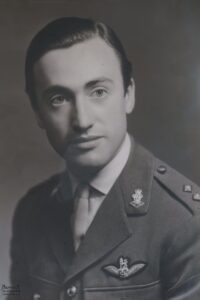Hugh Lovett joined The Queen’s Own Hussars in Detmold in July 1964. He was the third generation in a line of soldier artists, his father and grandfather both having served in the Gloucestershire Regiment.

Best known was Hugh’s grandfather, General Alfred Crowdy Lovett whose paintings of Indian Army uniforms were displayed for many years along a corridor adjacent to the Indian Army Room in Old College, Sandhurst. These have now been removed to the National Army Museum for safer keeping and replaced with prints.
Hugh was born on 13th December 1943 and from 1949 to 1951 the family lived in Austria where Hugh’s father was serving with the Control Commission. The first six months were spent in Vienna where the family could look down from a nearby hilltop on the Russian tanks which were massing on the Hungarian border. Hugh’s father was then appointed Town Major of Klagenfurt on the Wörtersee in Corinthia. In this idyllic tourist area with swimming in the lake, the family lived in a beautiful villa which had been requisitioned for their use.
Hugh was educated at Wellington and Sandhurst from where he was commissioned in July 1964. Six months later ‘A’ Squadron with which Hugh was serving was detached to Berlin but he returned to the main regiment at Catterick in 1966 before training as a helicopter pilot. In July 1967 the regiment was posted to Aden with ‘B’ Squadron detached in Sharjah where Hugh served with the Regimental Air Troop.
Whilst posted to the Army School of Aviation at Middle Wallop Hugh broke his neck in a serious car accident whilst returning to barracks in the early hours of the morning. However, he made good use of his convalescence to enrol in a course at Chelsea College of Art with a view to improving his drawing.
Returning to the regiment in 1971 as Adjutant Hugh began painting in earnest and his works include that of the action in Al-Mansoura for which 2/Lt. Richard Vaughan-Griffith was awarded his MC. This is now on display in the QRH Museum in Warwick.
When he joined the regiment Hugh was already an accomplished horseman with a natural eye for a ball. Learning to play polo was therefore a natural progression in which Hugh was encouraged by Major Charles Lockhart, the mainstay of regimental polo for many years and who nurtured many of the best regiment’s best players. By 1967 Hugh was playing polo for the highly successful regimental team in which he continued until he left the army.
Following a posting as a staff officer at Tidworth Hugh decided to leave the army in 1975 to become a professional helicopter pilot. He was tragically killed two years later at an air show when a landing biplane collided with him as he was taking off.


